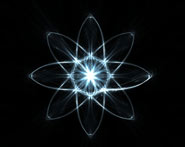


 الفيزياء الكلاسيكية
الفيزياء الكلاسيكية
 الكهربائية والمغناطيسية
الكهربائية والمغناطيسية
 علم البصريات
علم البصريات
 الفيزياء الحديثة
الفيزياء الحديثة
 النظرية النسبية
النظرية النسبية
 الفيزياء النووية
الفيزياء النووية
 فيزياء الحالة الصلبة
فيزياء الحالة الصلبة
 الليزر
الليزر
 علم الفلك
علم الفلك
 المجموعة الشمسية
المجموعة الشمسية
 الطاقة البديلة
الطاقة البديلة
 الفيزياء والعلوم الأخرى
الفيزياء والعلوم الأخرى
 مواضيع عامة في الفيزياء
مواضيع عامة في الفيزياء|
Read More
Date: 18-8-2020
Date: 31-8-2020
Date: 22-7-2020
|
Positional measurements
Perhaps the most obvious kind of positional measurement involves recording the coordinates of celestial objects. Such determinations may lead to the evaluation of the orbit of a planet or binary star, the distances of stars by parallax, the distribution of stars in space, etc. The basic data are first recorded on two-dimensional detectors such as photographic plates or CCDs attached to the most appropriate telescope or camera that is available. A few reference stars with accepted coordinates are required and the positions of these stars and the ones of special interest are measured.
If conventional photography is used, the resulting plates are reduced using a two coordinate microscope or measuring engine. The photographic plate is clamped to a table whose position can be adjusted along two directions (X and Y ) by means of highly accurate micrometer screws. A small area of the plate can be viewed by the microscope which is fixed to the mainframe. Movement of the micrometers allows any part of the plate to be inspected, and by setting the screws so that the crosswire in the microscope bisects any image, the image’s position may be determined in terms of X and Y . By measuring the X, Y coordinates of the reference stars, the measurement of the position of any other object in terms of X and Y can be converted to the astronomical (equatorial) coordinates, right ascension and declination. As the photographic plate usually records the curved celestial sphere on a plane, special formulas derived by spherical trigonometry are used to perform the conversion.
There are various degrees of automation which are applied to star plates. Where the plate carries images of only a few celestial objects, the astronomer may be able to readout the X Y micrometer settings, or they may be automatically recorded each time a star is centred on the graticule of the eyepiece. This is obviously impossible in the case of large field surveys which may register one million images of many kinds of celestial object on each plate. In recent years sophisticated devices have been designed which automatically scan the plate, hunting for each of the star images, even distinguishing between a star and a distant galaxy. Highly automated instruments of this kind have been developed at the Royal Observatory, Edinburgh. Its Super COSMOS scanning system can operate on 20 in × 20 in glass plates and ‘celluloid’ films up to 14 in × 14 in. The information from the plate or film is digitized with a spatial resolution of 10 μm with 1015 bits (37 768 grey levels) for the intensity values. Special software processes the resulting data to produce a catalogue of all the objects detected on each plate, with 32 parameters associated with each object.
Prior to computerized systems, other special types of microscope for identifying moving objects or variable stars were sometimes used. One instrument, known as a blink microscope, has two carriages which support two plates taken of the same region of the sky at different times. An arrangement is provided so that the identical star field on each plate can be viewed in quick succession. Any object which has moved against the star background between the two exposures will appear to jump between two positions across the fixed star background. Any variable star will appear to pulsate as the microscope is operated.
Some types of positional measurement require only one coordinate to be measured and, in this case, the microscope need not have both X and Y movements. For example, for the measurements of radial velocity, comparison of the stellar spectral lines and laboratory spectral lines of a photographic plate can be obtained by a single coordinate-measuring microscope.
The accuracy to which any positional measurements can be made depends on several parameters, one of which is obviously the accuracy of the microscope, usually controlled by the quality of the micrometer screw. The uncertainty of any position may be typically ±1 × 10−3 mm and such a figure may then be used to determine the uncertainty of the parameter being measured.
Because of the smaller size of the CCD chip relative to a photographic plate, large surveys of stellar positional measurements have not been applied to ground-based surveys. However, very accurate differential positional measurements are readily obtained from CCD frames under direct computer control without the subjectivity of any eye-ball assessment of the XY positions of the image seen either through a microscope or on a VDU screen. For example, in the case of stellar images, the centroid of the distribution of the photons as collected by the local pixels is readily determined in terms of the structure of the light-sensitive chip, the rows and columns providing the reference grid.
The positions are readily determinable as fractions of the basic pixel size, making for very accurate measurements of angular separations according to the focal length of the telescope.



|
|
|
|
إجراء أول اختبار لدواء "ثوري" يتصدى لعدة أنواع من السرطان
|
|
|
|
|
|
|
دراسة تكشف "سببا غريبا" يعيق نمو الطيور
|
|
|
|
|
|
بالفيديوغراف: ممثل المرجعية الدينية العليا والامين العام للعتبة الحسينية يتفقدان مشروع مطار كربلاء الدولي
|
|
|
|
بالصور: سنابل تفيض بالخير في مزارع العتبة الحسينية (عمليات حصاد الحنطة)
|
|
|
|
تضمنت الجولة توجيهات متعلقة براحة المسافرين.. ممثل المرجعية العليا والامين العام للعتبة الحسينية يطلعان ميدانيا على سير العمل في مطار كربلاء الدولي
|
|
|
|
بالفيديو: مركز لعلاج العقم تابع للعتبة الحسينية يعلن عن أجراء (117) عملية تلقيح اصطناعي خلال الربع الاول من العام الحالي
|